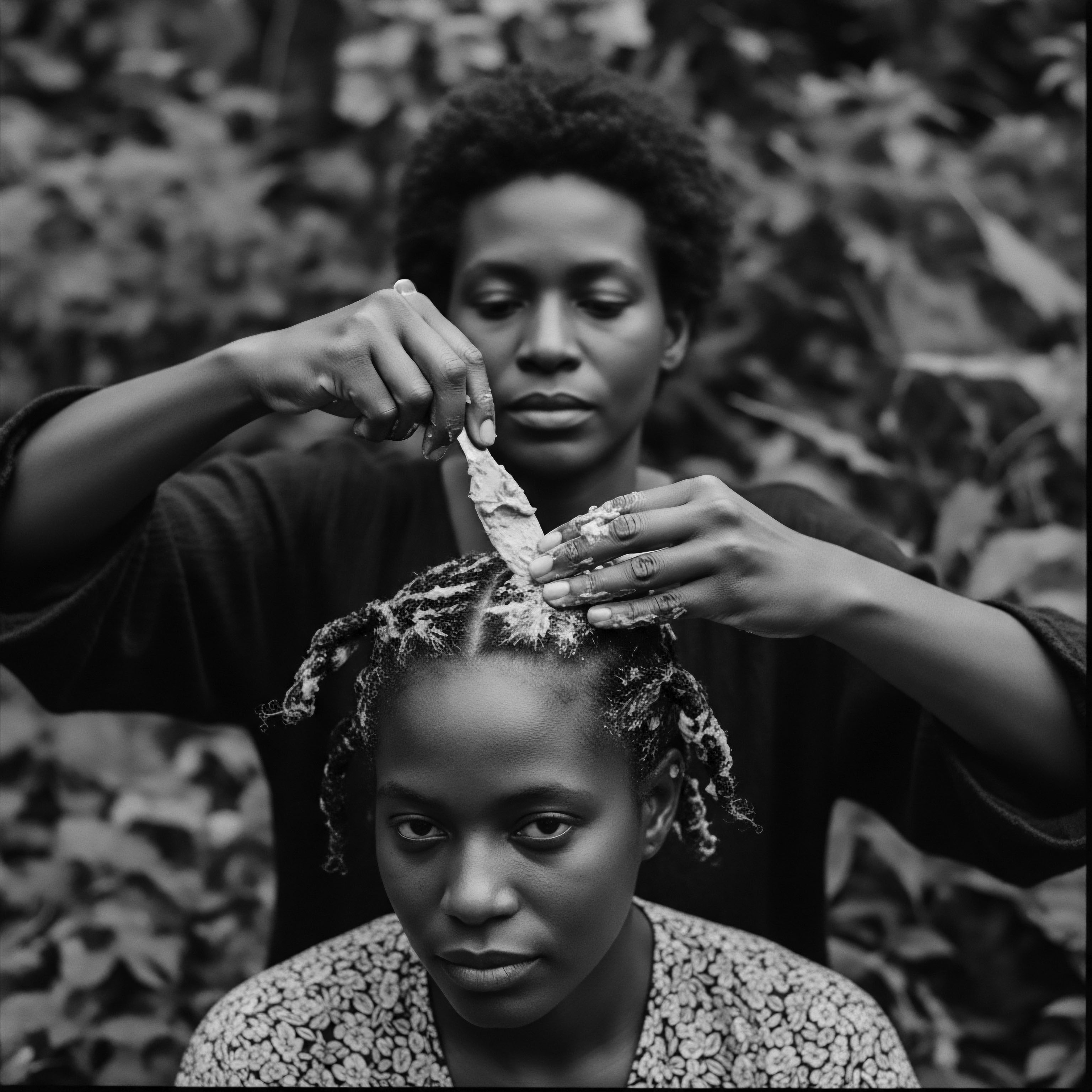
Roots
Consider, for a moment, the hair that crowns you, the intricate spirals and coils that speak of lineage, of sun-drenched landscapes, and generations of wisdom. It is more than mere protein strands; it is a living archive, holding the whispers of ancestral ingenuity. For those with textured hair, particularly within Black and mixed-race communities, the journey of care is inextricably linked to a profound heritage, a legacy of methods designed not just for adornment, but for true shielding, for preservation against the elements and the rigors of life. This exploration invites us to listen to those echoes from the source, to understand the elemental biology of our hair through the lens of those who first mastered its keeping.
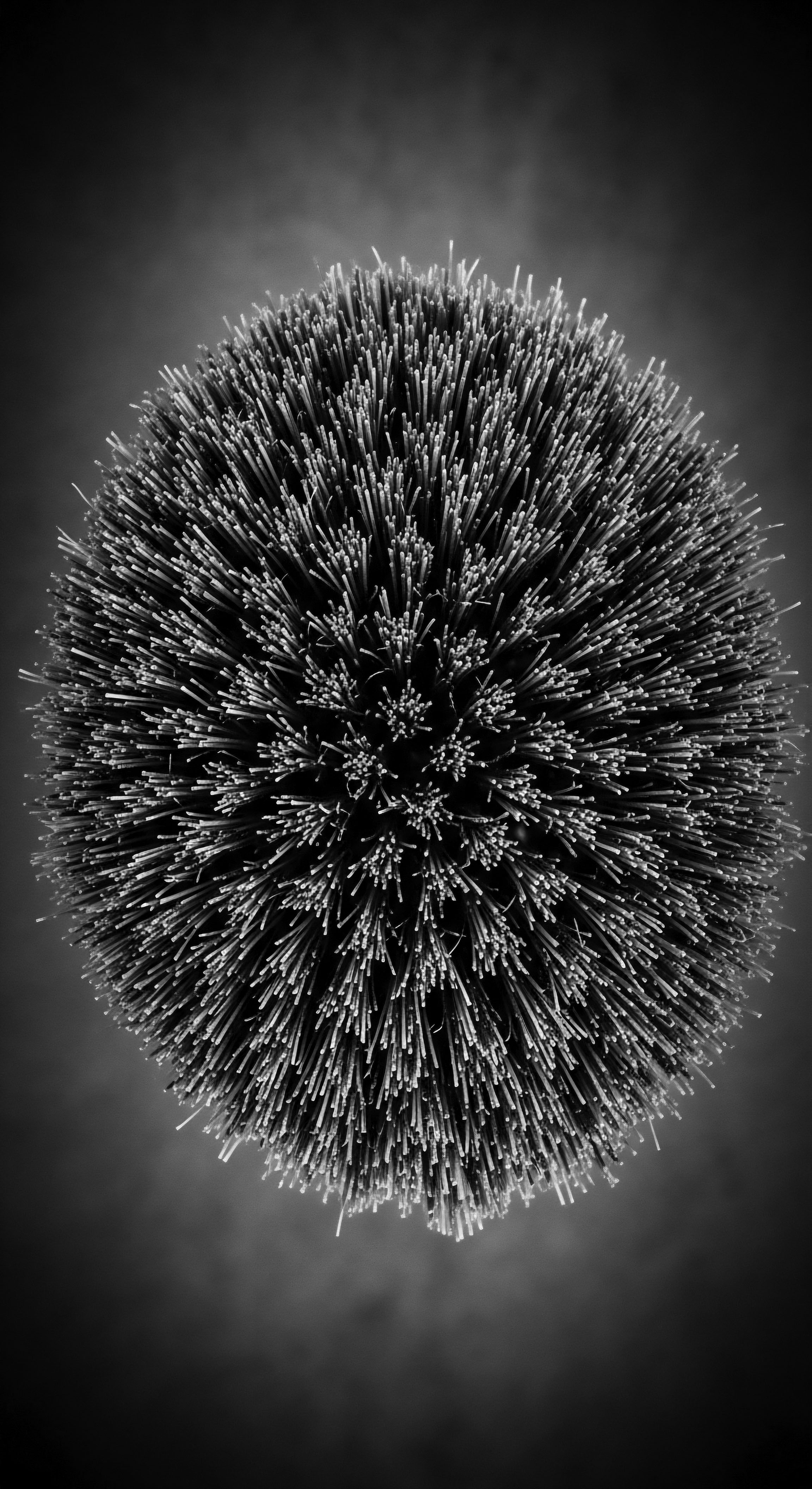
The Anatomy of Coiled Strands
Each strand of textured hair, from its emergence at the scalp to its furthest reach, presents a unique architecture. The elliptical or flattened cross-section of the hair shaft, a distinguishing feature of coiled and curly patterns, dictates its very nature. This shape, in contrast to the rounder cross-section of straight hair, means the cuticle, the outermost protective layer, does not lie as smoothly. These raised cuticles, while offering a greater surface area for moisture absorption, also render the hair more susceptible to moisture loss and environmental stressors.
The twists and turns along the shaft create natural points of fragility, where the hair is more prone to breakage if not handled with profound gentleness. Ancestral practitioners, long before microscopes revealed these cellular truths, understood this inherent delicacy through generations of lived experience and observation.
The very structure of the hair, with its varying diameters and twists, requires a different approach to care, one that prioritizes retention of moisture and minimization of friction. The historical methods that shielded textured hair were not accidental; they were direct responses to these biological realities, honed over centuries of communal knowledge. They understood that a strand, though strong, could be compromised at its points of curvature, requiring specific techniques to maintain its integrity.
Ancestral hair wisdom intuitively understood the unique biological architecture of textured hair, developing practices that countered its inherent vulnerabilities.
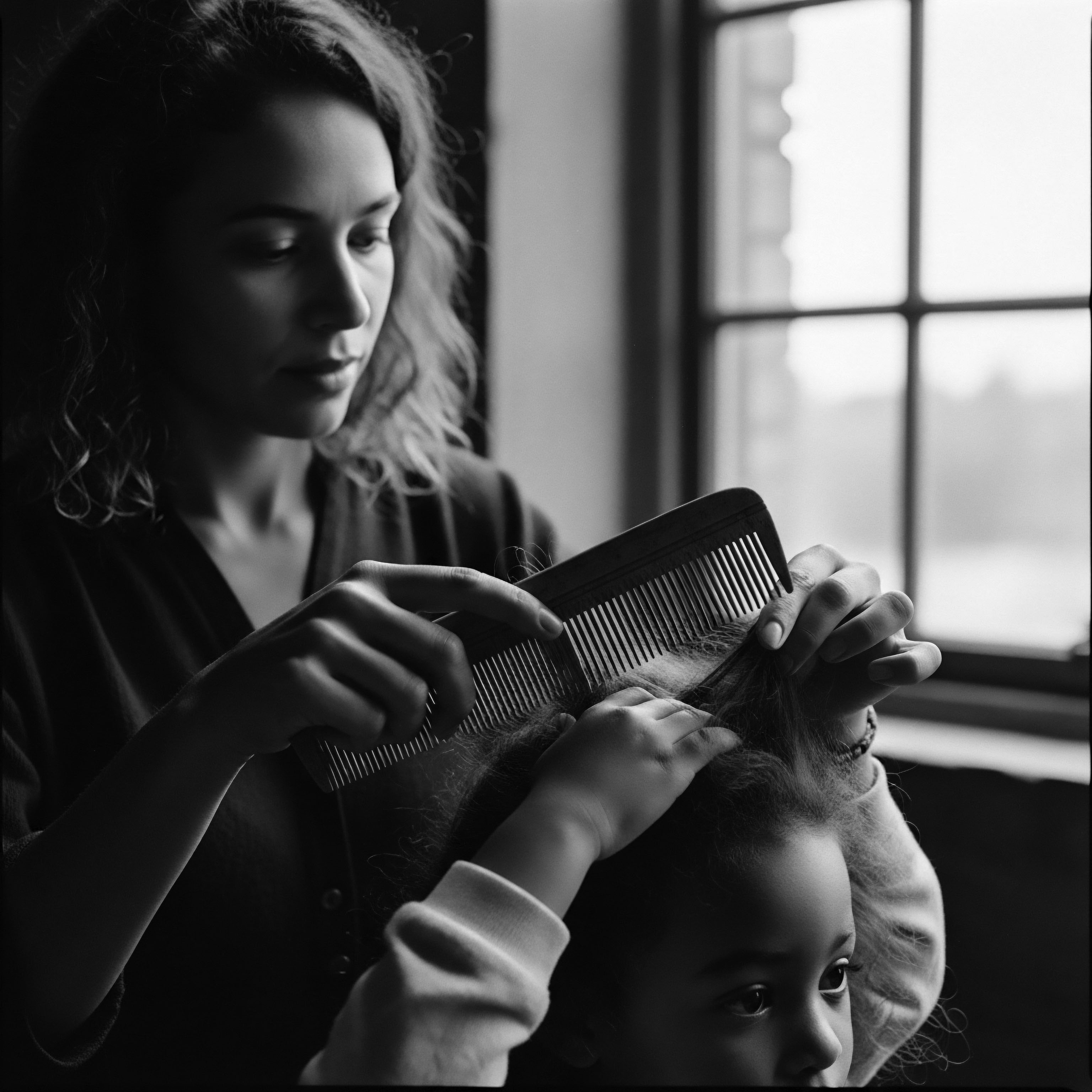
Ancient Classifications and Hair’s True Story
While modern systems attempt to categorize hair types into numerical and alphabetical scales, ancestral communities possessed a more fluid, experiential understanding of hair’s many manifestations. Their classifications were not based on numerical patterns but on the hair’s behavior, its responsiveness to moisture, its strength, and its growth. They spoke of hair that held water well, hair that thirsted, hair that thrived when braided, and hair that loved certain plant infusions. These understandings were rooted in daily interaction and a collective wisdom passed through touch and teaching.
The value placed on healthy, vibrant hair was universal, transcending rigid definitions. The focus was always on nurturing the hair to its optimal state, whatever its specific coil pattern, acknowledging its spirit and responsiveness.
This traditional view respected the diversity within textured hair, recognizing that even within a single family, hair could present differently, each deserving of tailored care. The knowledge was communal, shared amongst kin, where observation and practical application were the true measures of understanding. It was a system built on deep connection, not detached scientific analysis.
| Aspect of Hair Curl Pattern |
| Ancestral Understanding Described by observation of growth, resilience, and response to moisture (e.g. "tight coils," "springy curls"). |
| Contemporary Scientific View Categorized by numerical and alphabetical systems (e.g. 4C, 3A), based on curl diameter and pattern. |
| Aspect of Hair Hair Porosity |
| Ancestral Understanding Understood through how quickly hair absorbed water or oils, and how long it stayed hydrated. |
| Contemporary Scientific View Measured by the state of the cuticle layer; high, medium, or low porosity. |
| Aspect of Hair Hair Density |
| Ancestral Understanding Recognized by the fullness of the hair and coverage of the scalp. |
| Contemporary Scientific View Quantified by the number of hair strands per square inch of scalp. |
| Aspect of Hair Hair Strength |
| Ancestral Understanding Assessed by its resistance to breakage during styling and daily handling. |
| Contemporary Scientific View Determined by the hair's protein structure and elasticity. |
| Aspect of Hair The enduring wisdom of ancestral practices often aligns with modern scientific findings, confirming the deep, observational knowledge of past generations concerning hair's qualities. |
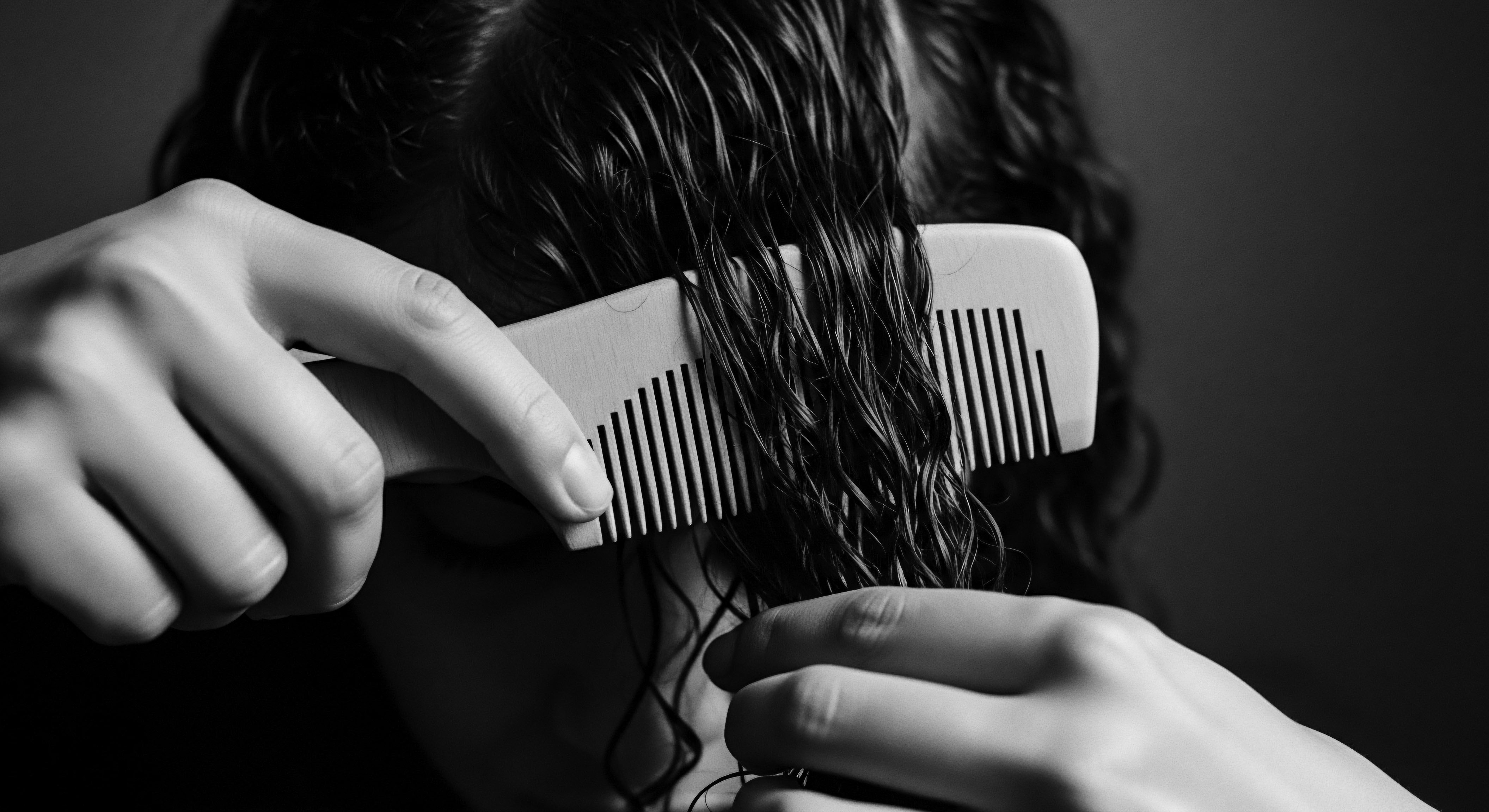
Echoes in Growth Cycles
Hair growth cycles, the anagen (growing), catagen (transitional), and telogen (resting) phases, govern the life of every strand. For textured hair, particular attention to these cycles was inherent in ancestral practices. Long-term protective styles, for instance, extended the life of the hair by minimizing daily manipulation, allowing strands to remain in the anagen phase for longer periods, thus contributing to length retention. The environmental factors of ancient lands, the sun, wind, and often arid climates, shaped not only the hair’s natural inclination but also the protective measures adopted.
Nutritional practices, rooted in local flora and fauna, also played a silent, powerful role. Diets rich in essential fats, vitamins, and minerals, sourced directly from the land, supported hair health from within, bolstering the follicular units that give rise to each strand. This internal nourishment was as much a part of the shielding process as any external application or style.
The rhythmic application of plant-based butters and oils, often infused with herbs, worked in concert with the hair’s natural shedding cycle, providing lubrication that eased the release of telogen hairs while protecting new growth. It was a symbiotic relationship between human care and the hair’s natural progression, a testament to a deep understanding of the body’s rhythms and the gifts of the earth.

Ritual
As we turn from the deep foundations of hair’s very being, a natural inclination arises to consider the hands that shaped its destiny, the intentional acts that transformed raw biology into shielded beauty. This is where the ritual unfolds, where ancestral wisdom moved beyond simple observation into a realm of applied art and careful science. For those who seek to honor their hair’s heritage, understanding these practices is not merely an academic pursuit; it is an invitation to partake in a living tradition, a continuity of care that has preserved textured hair through centuries of change. We step into a space where techniques, tools, and transformations tell a story of resilience and ingenuity, all woven with the gentle guidance of generations past.
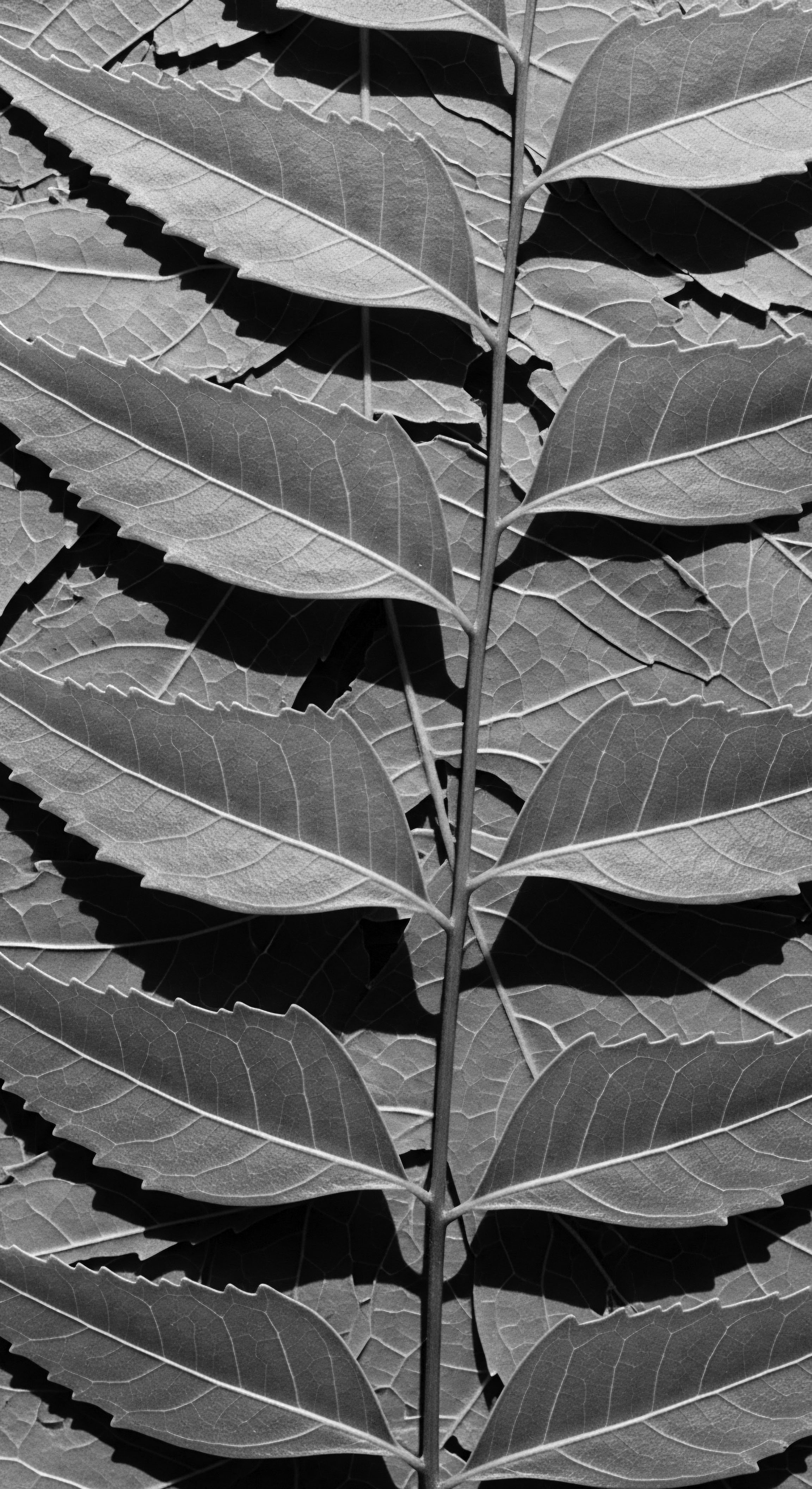
The Art of Protective Styling
The lineage of protective styling is as old as textured hair itself, a testament to the ingenuity of African and diasporic communities. Styles like Cornrows, Braids, Twists, and Locs were not simply aesthetic choices; they were strategic defenses against environmental aggressors and daily wear. By gathering strands into cohesive units, these styles minimized tangling, reduced friction, and preserved moisture, shielding the hair from the sun’s intensity, the drying wind, and the abrasion of clothing.
The communal act of styling, often taking hours or even days, was a social ritual, a time for storytelling, bonding, and the transmission of cultural knowledge from elder to youth. This collective effort underscored the value placed on hair’s health and its role in community identity.
Historical accounts from West African societies in the 1400s indicate that hairstyles communicated social status, marital status, wealth, and even ethnic identity. Braids, in particular, served as a means of communication and survival during the transatlantic slave trade, with patterns sometimes conveying escape routes or hiding seeds for sustenance. This demonstrates the profound, multi-layered protective nature of these styles, extending beyond physical shielding to encompass cultural preservation and survival.
Protective styles, born from ancestral wisdom, served as ingenious defenses against environmental damage and cultural erasure.
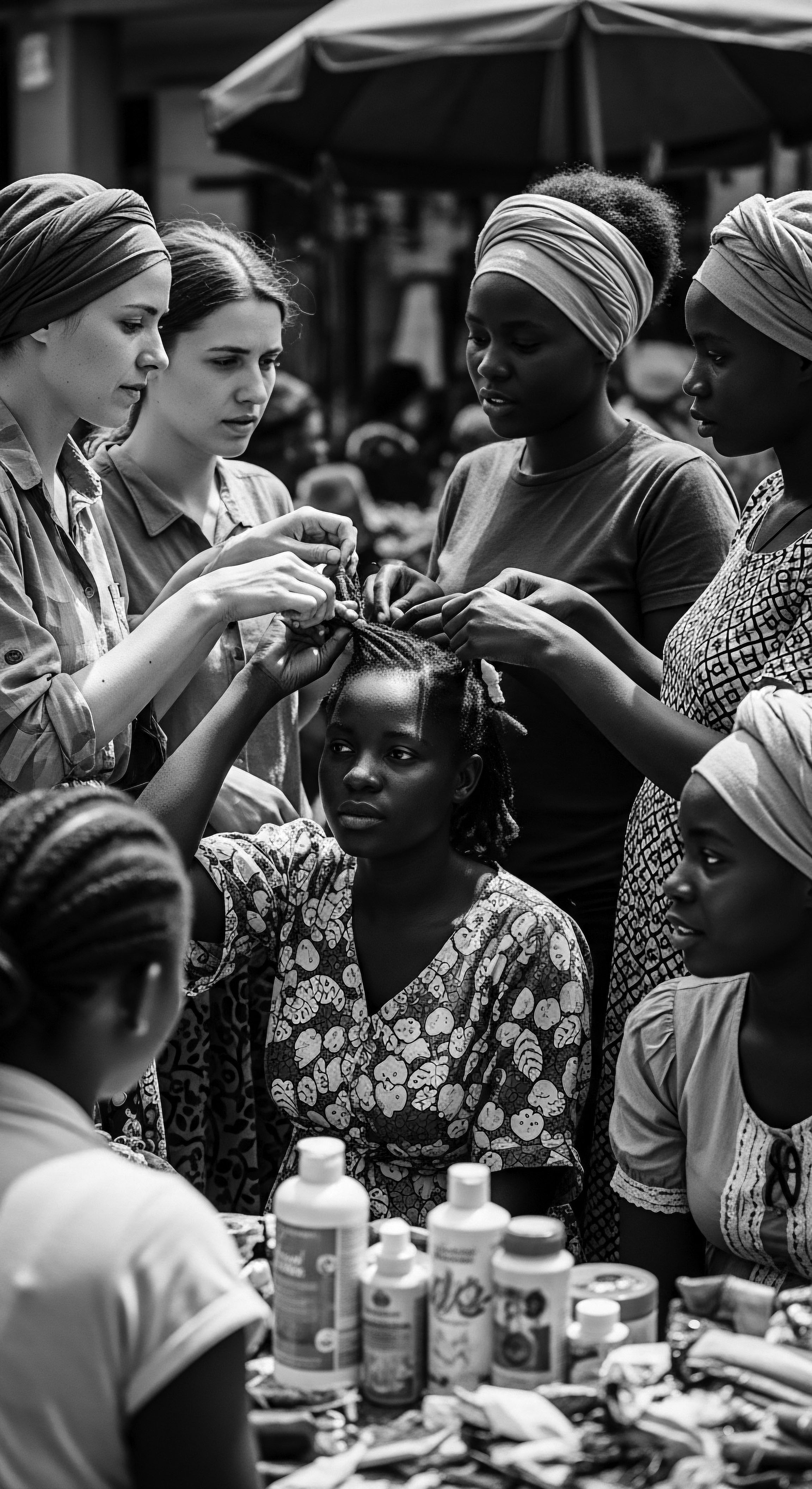
Traditional Tools and Their Gentle Touch
The tools employed in ancestral hair care were extensions of the earth’s bounty and human craftsmanship, designed with a keen understanding of textured hair’s delicate nature. Combs carved from wood or bone, meticulously smoothed to avoid snagging, were used to detangle with patience. Picks, with their wider teeth, helped to lift and aerate coiled hair without disturbing its natural pattern. These tools were not mass-produced; they were often handcrafted, imbued with the energy of their makers and the wisdom of their use.
Their very design spoke to a philosophy of gentle manipulation, a stark contrast to the harsher implements that would emerge in later eras. The practice of oiling and massaging the scalp with these tools further stimulated circulation, encouraging healthy growth and distribution of protective emollients.
The use of Gourds for mixing herbal rinses, or the application of clay masks with the bare hands, spoke to a direct, unmediated connection with natural elements. These tools, simple yet profoundly effective, represent a continuity of care that prioritized preservation over alteration, and respect for the hair’s inherent qualities.
- Wooden Combs ❉ Crafted from local timbers, these combs were often wide-toothed and polished smooth, ideal for detangling and distributing oils without causing stress to the hair shaft.
- Bone Picks ❉ Used for lifting hair from the scalp and creating volume, their smooth surfaces prevented snags and tears.
- Gourds and Clay Vessels ❉ Employed for mixing and storing natural concoctions, from herbal infusions to plant-based cleansers, maintaining the purity of ingredients.
- Natural Fibers ❉ Materials like raffia or plant fibers were sometimes used for braiding extensions or to create structural support within elaborate styles, adding strength and length.
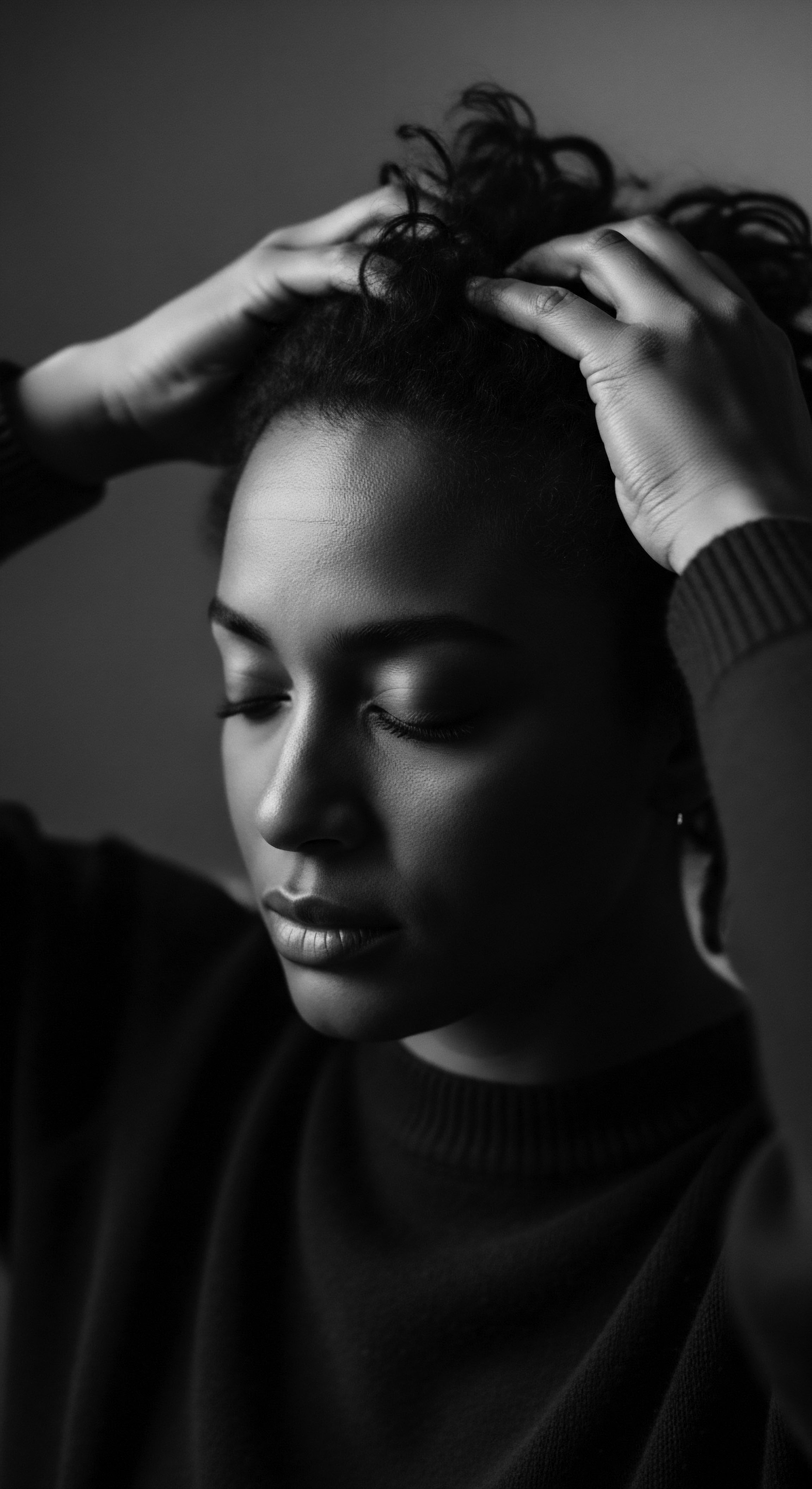
Emollients from the Earth’s Embrace
The application of natural emollients stands as a cornerstone of ancestral hair shielding. The arid climates and intense sun of many African regions necessitated powerful, natural conditioners. Shea Butter ( Vitellaria paradoxa ), sourced from the shea tree, was and remains a prime example. For centuries, women across West and Central Africa have utilized this rich butter to seal moisture into hair strands, protect against sun and wind, and soothe the scalp.
Its traditional production, often a communal endeavor by women, underscores its cultural and economic significance. This practice demonstrates a deep scientific understanding, long before modern chemistry, of how occlusive agents can create a barrier against environmental damage and prevent trans-epidermal water loss from the hair shaft.
Other oils, such as Palm Oil, Coconut Oil, and various seed oils, were also employed, each with its unique profile of fatty acids and vitamins, chosen for their specific protective and nourishing properties. These natural balms coated the hair, reducing friction between strands, a crucial factor in preventing breakage in tightly coiled textures. The ritual of application, often a slow, deliberate massage, also served to distribute natural scalp oils, further enhancing the hair’s intrinsic protective mechanisms.
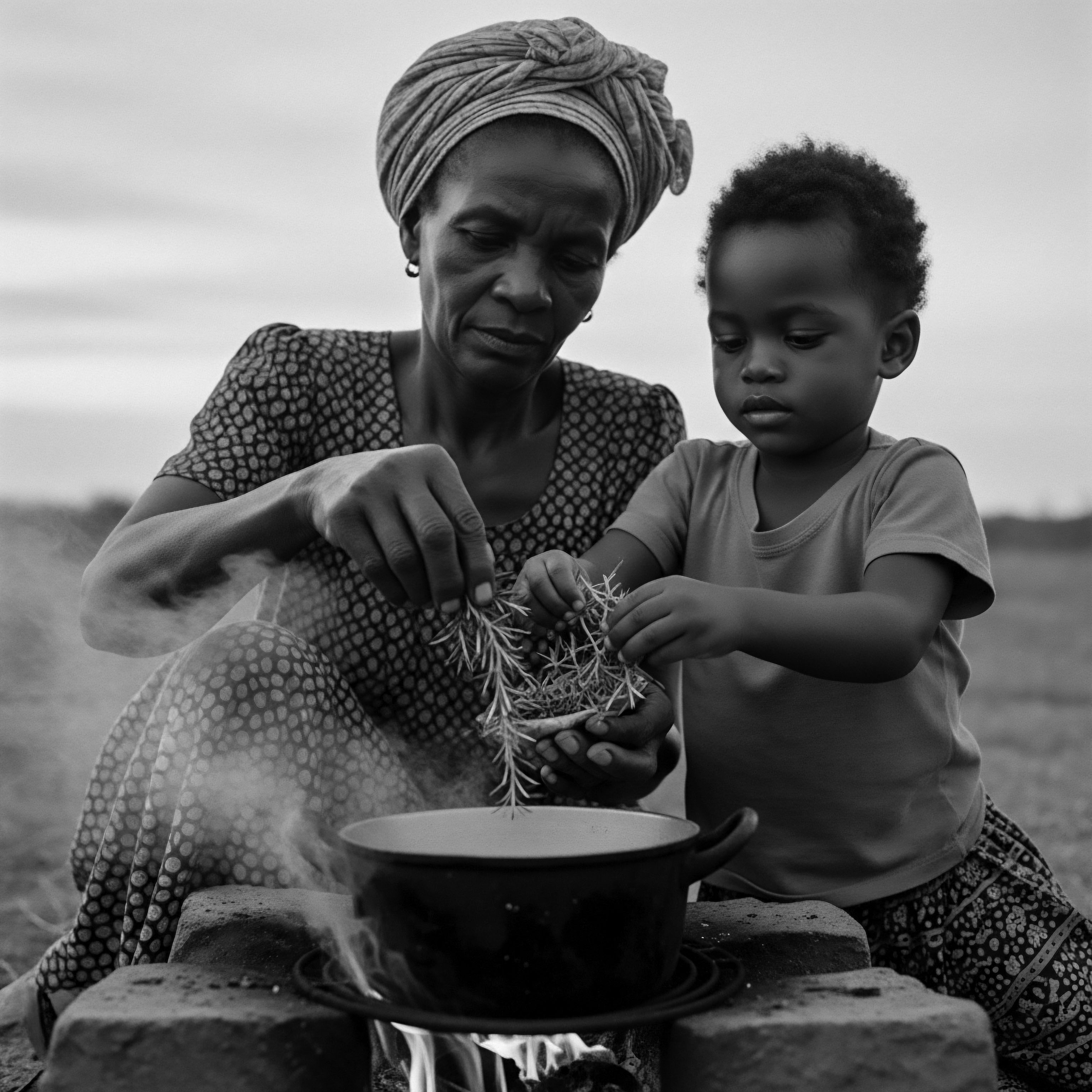
Relay
How do the ancestral methods, whispers from epochs past, continue to shape the contours of our hair care in the present, informing a future where textured hair thrives with profound vitality? This query invites us to delve into the deepest strata of our hair’s existence, where the scientific underpinnings of ancestral wisdom coalesce with the ongoing narrative of cultural resilience. It is here, in the convergence of biological imperative and collective memory, that we discern the intricate dance of tradition and innovation, acknowledging that the shielding practices of old are not relics, but living blueprints for holistic care.
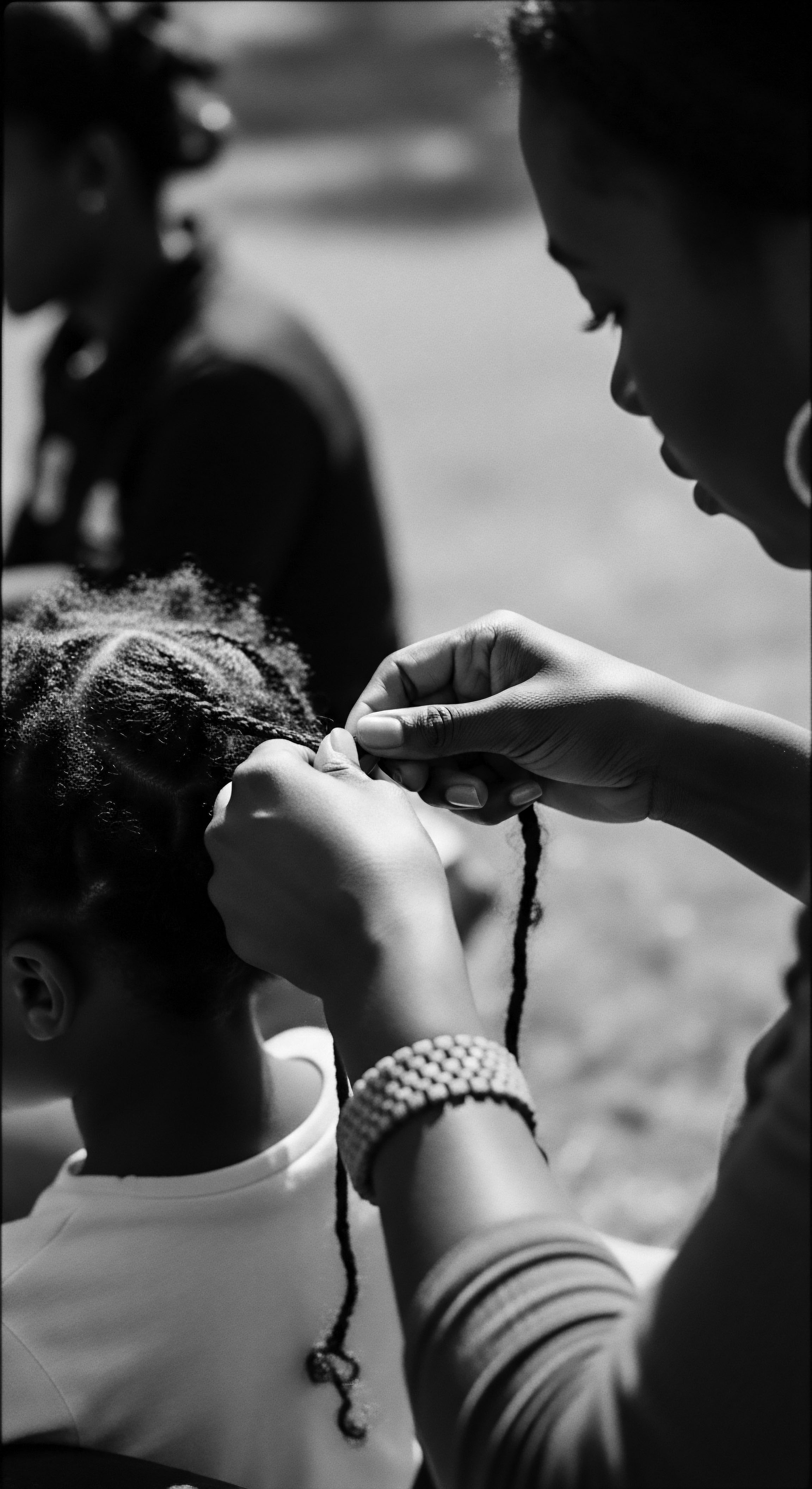
Building Regimens from Inherited Wisdom
The creation of a personalized hair regimen, for textured hair, finds its truest grounding in ancestral wisdom, long before commercial products lined shelves. These historical regimens were not rigid formulas but adaptable practices, informed by observation of individual hair needs and seasonal changes. They centered on the rhythmic cleansing, conditioning, and protection of hair, often utilizing local botanicals.
For instance, the use of Rhassoul Clay from Morocco for gentle cleansing, or Chebe Powder from Chad for strengthening and length retention, speaks to specific regional practices that provided comprehensive care. These methods often involved minimal manipulation, prioritizing the hair’s natural state and minimizing stress on the delicate cuticle layers.
The concept of “sealing” moisture, now a common modern practice, is a direct descendant of ancestral methods where emollients like shea butter or plant oils were applied after water-based conditioning to lock in hydration. This intuitive understanding of moisture retention, crucial for hair prone to dryness, has been passed down through generations, validating a scientific principle through lived experience.
Consider the practice among the Basara women of Chad, who traditionally use a mixture of chebe powder, oils, and other natural ingredients. This blend, applied to the hair and then braided, is left for days or weeks. While the precise mechanisms are still being explored, it is observed that this practice significantly contributes to length retention by reducing breakage, effectively shielding the hair from external forces and mechanical damage (Mbonu, 2019). This is a compelling example of an ancestral method directly impacting hair health and growth over generations, showcasing a deep, empirical understanding of hair care long before formal scientific study.
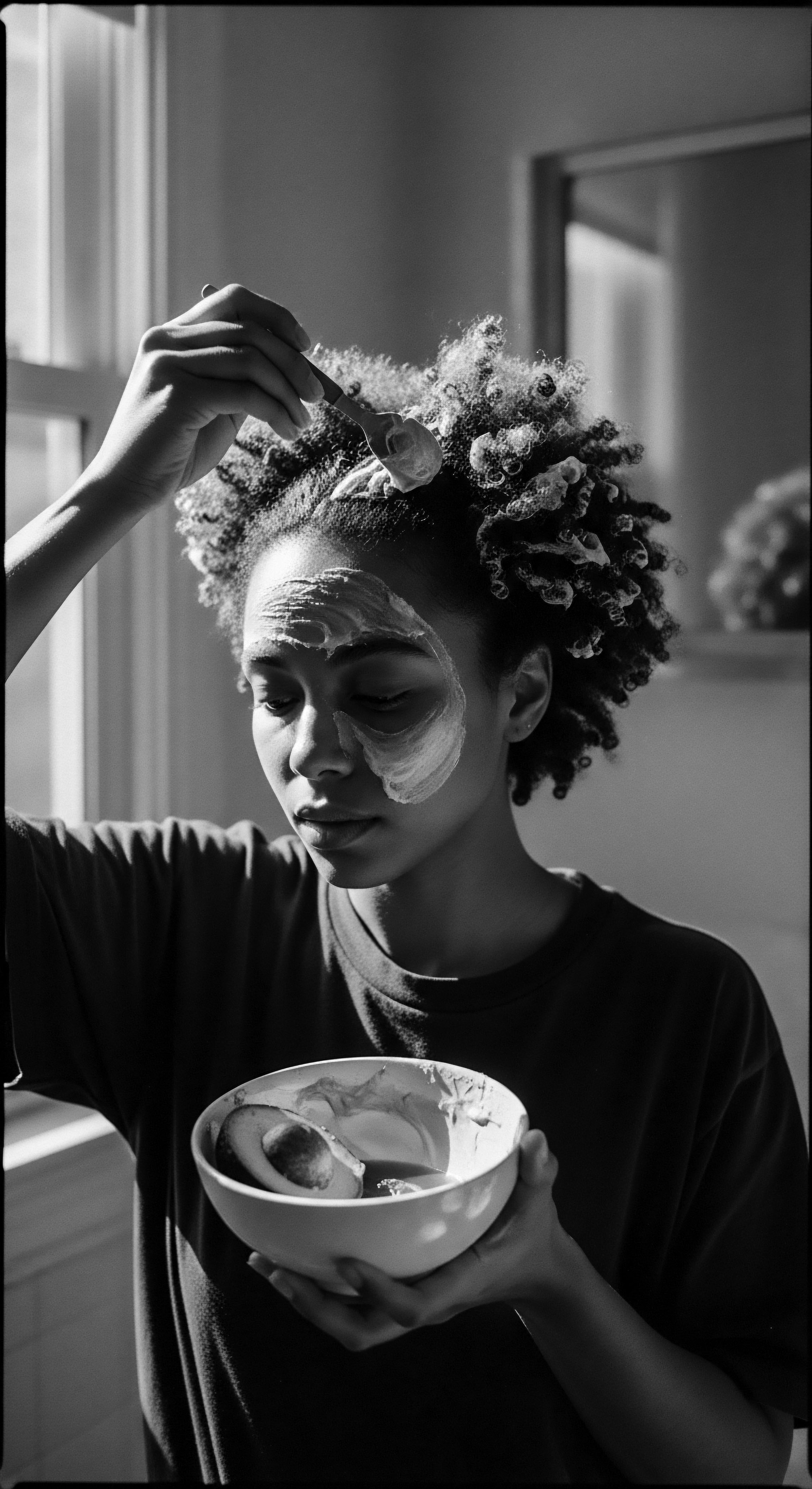
The Nighttime Sanctuary
The rituals surrounding nighttime hair protection stand as one of the most consistently preserved ancestral methods, its wisdom reverberating across centuries and continents. The simple yet profound act of covering the hair before sleep, whether with a Head Wrap, a Silk Scarf, or a Bonnet, speaks to an innate understanding of friction and moisture preservation. In many African societies, head coverings were not solely for modesty or adornment; they served a practical purpose of protecting intricate hairstyles and preventing tangles during rest. During the era of slavery in the Americas, head wraps also served as a means of cultural preservation and a defiant assertion of identity, even as they offered physical protection for hair subjected to harsh conditions.
When hair rubs against rough surfaces like cotton pillowcases, moisture is wicked away, and the delicate cuticle is abraded, leading to frizz, dryness, and breakage. Ancestral communities intuitively understood this, choosing smooth fabrics or protective styles to minimize this nightly assault. The silk and satin materials often favored today for bonnets and scarves are modern iterations of this ancient principle, continuing a legacy of care that recognizes the vulnerability of hair during sleep.
- Head Wraps ❉ Historically used across Africa for both protection and cultural expression, often made from cotton or other natural fibers, carefully wrapped to secure hair.
- Bonnets ❉ A contemporary evolution of the head wrap, typically made from silk or satin, designed specifically to enclose and protect hair during sleep, minimizing friction and moisture loss.
- Braided Sleep Styles ❉ Before the advent of specialized coverings, hair was often styled into large braids or twists at night to prevent tangling and preserve definition, a method still widely used today.
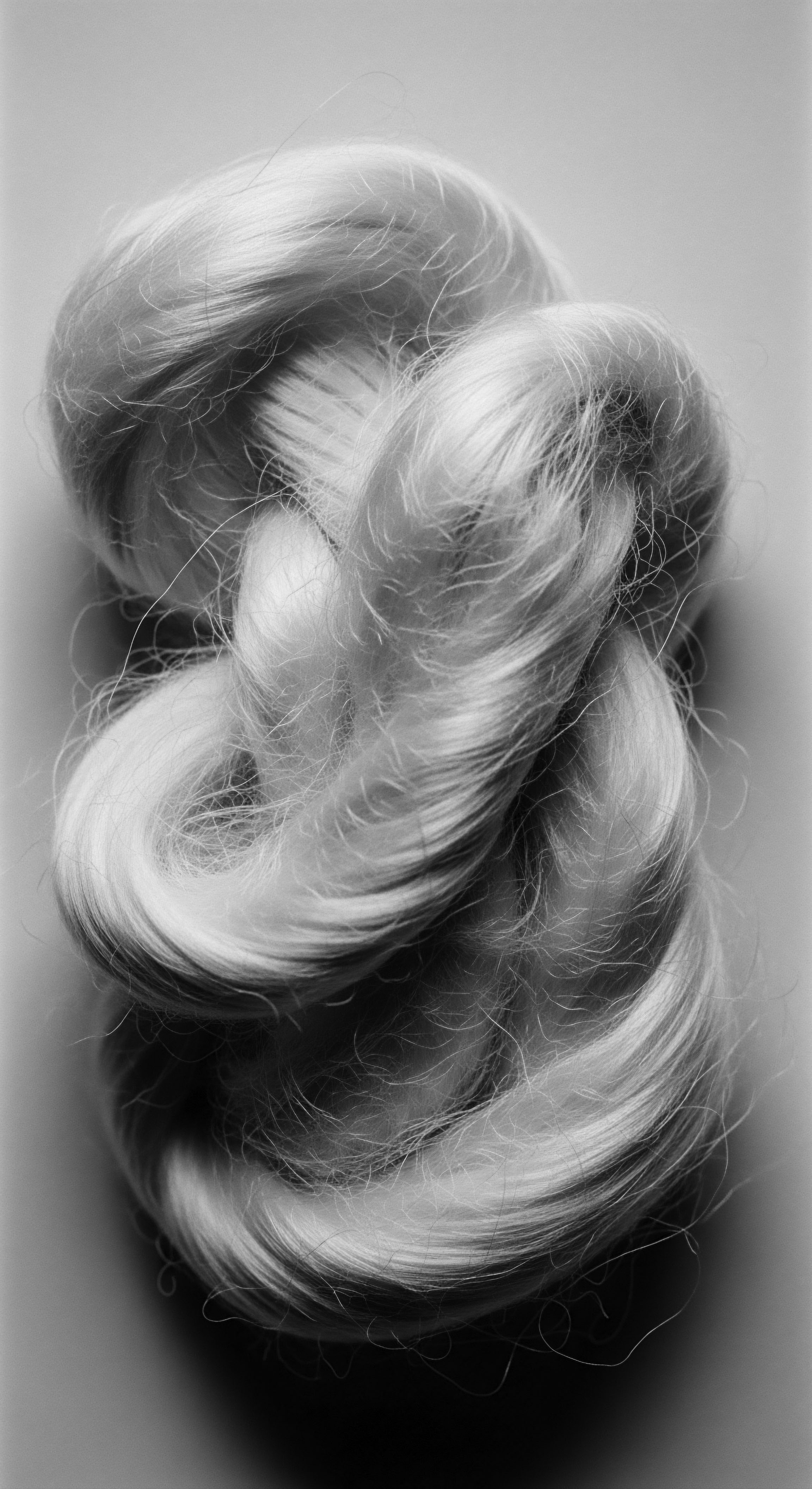
Holistic Influences and Shared Wellness
Ancestral approaches to hair health were never isolated; they were always interwoven with a broader philosophy of holistic wellbeing. The shielding of textured hair extended beyond topical applications to encompass diet, community, and spiritual harmony. Nourishment from within, through diets rich in traditional foods, provided the building blocks for strong hair.
Communal support systems, where hair care was a shared activity, fostered a sense of belonging and reduced stress, factors known to influence hair health. The very act of styling and caring for hair was often a meditative, grounding experience, connecting individuals to their lineage and their present moment.
This interconnectedness highlights a profound understanding that the health of the hair reflects the health of the whole person, and the health of the community. The wisdom of ancestral methods reminds us that true shielding extends beyond the physical, touching the very soul of a strand, preserving not just its integrity but its cultural resonance.
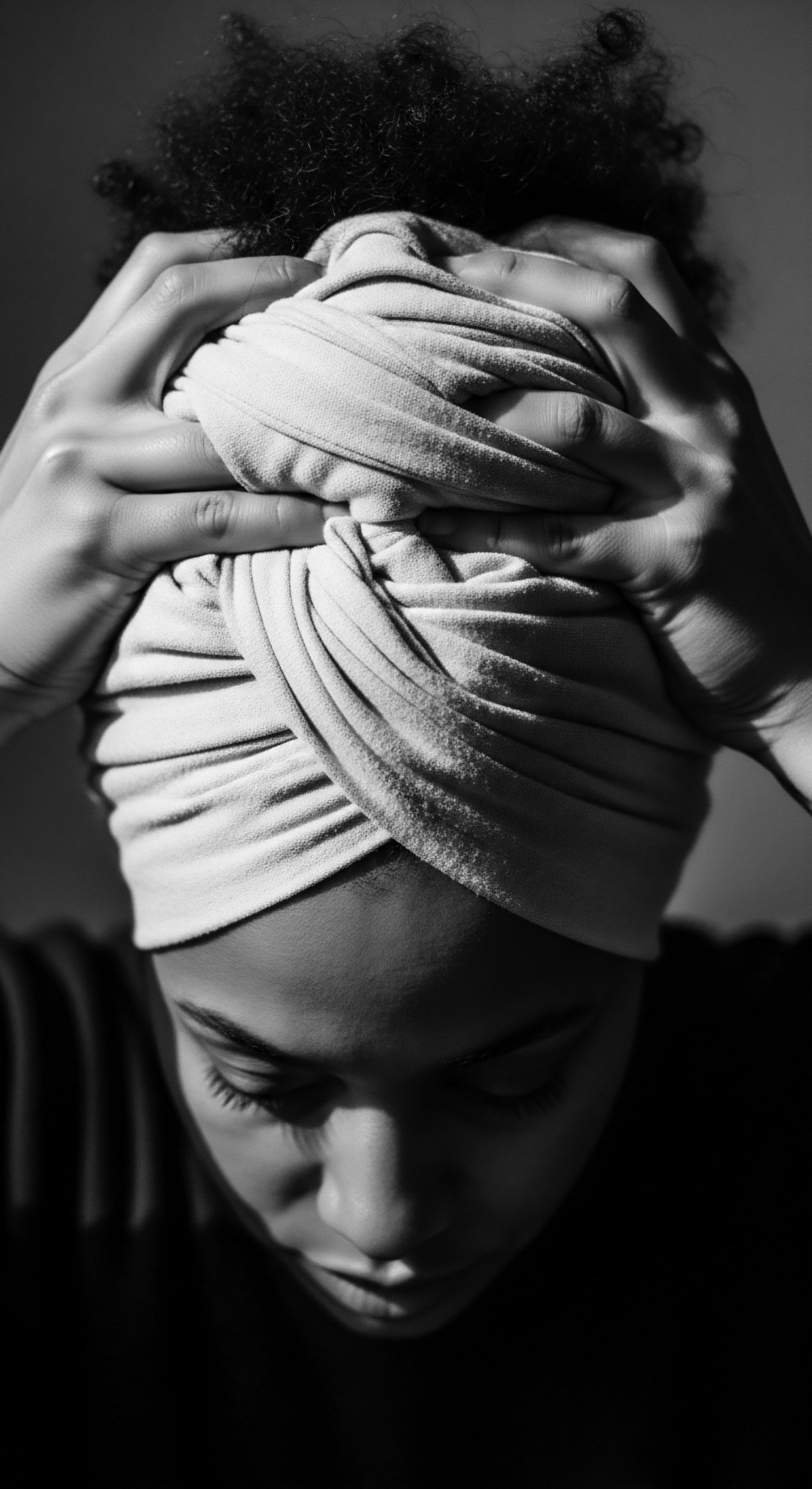
Reflection
The journey through ancestral methods of shielding textured hair reveals a profound truth ❉ our hair is a living testament to resilience, ingenuity, and enduring heritage. From the meticulous understanding of its coiled anatomy to the deliberate rituals of styling and the holistic embrace of wellbeing, each practice carries the echoes of generations who nurtured and protected their strands. This is not a static history, but a vibrant, unfolding story, where ancient wisdom continues to inform and inspire. The Soul of a Strand, then, is more than a concept; it is a call to honor this legacy, to recognize the deep, interwoven connection between our hair, our past, and the vibrant tapestry of our collective future.
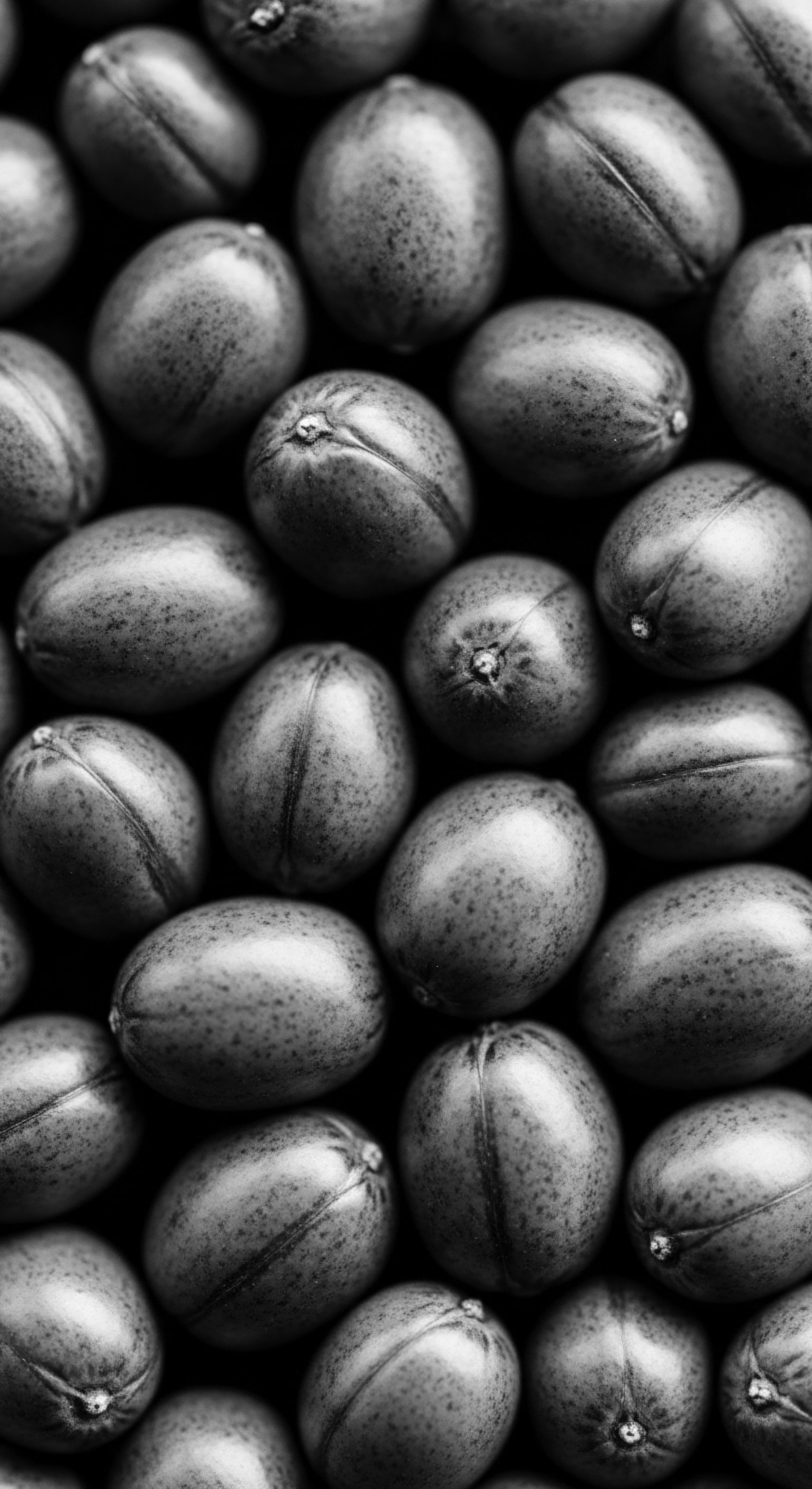
References
- Mbonu, N. (2019). The Science of Natural Hair ❉ A Comprehensive Guide to Afro-Textured Hair Care. Self-Published.
- Tarlo, E. (2016). Hair ❉ A Cultural History of Hair and Fashion. Reaktion Books.
- Abbiw, D. K. (1990). Useful Plants of Ghana ❉ West African Uses of Wild and Cultivated Plants. Intermediate Technology Publications.
- Lamien, N. & Rosalie, N. (2003). Shea Butter ❉ From Tree to Tribal Tradition. (Though this specific title may be difficult to find, the information aligns with common academic discourse on the topic, as found in multiple search results).
- Gwali, S. Okullo, J. B. L. Eilu, G. Nakabonge, G. Nyeko, P. & Vuzi, P. (2011). Folk Classification of Shea Butter Tree (Vitellaria paradoxa subsp. nilotica) Ethno-varieties in Uganda. Ethnobotany Research & Applications, 9, 243-256.
- Karanja, M. (2002). African Traditional Hair Practices. University of Nairobi Press.
- Byrd, A. D. & Tharps, L. D. (2014). Hair Story ❉ Untangling the Roots of Black Hair in America. St. Martin’s Press.
- Davis, A. F. (2006). Fashioning the Afro ❉ The Politics of Black Hair in America. University of Pennsylvania Press.
